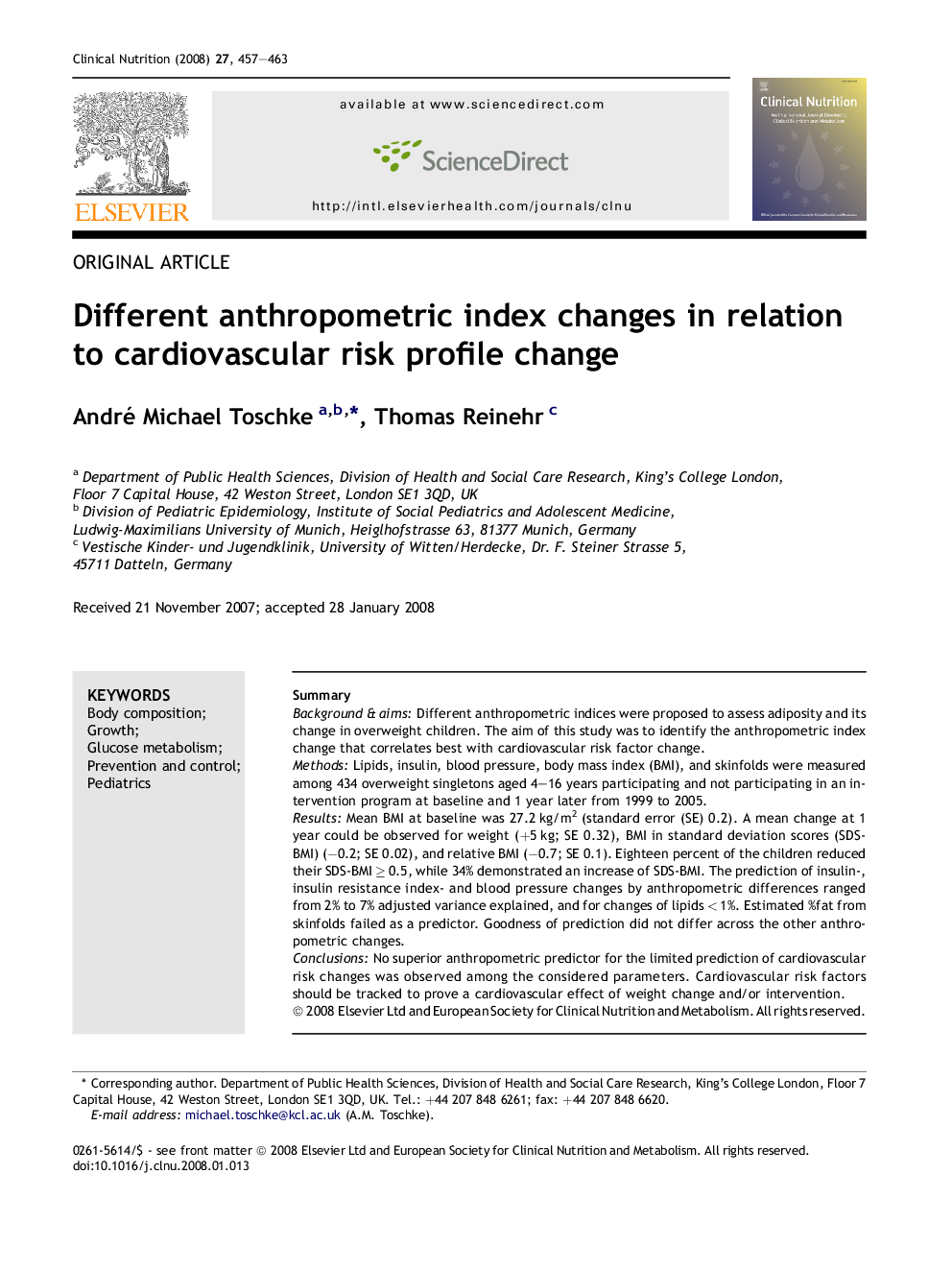| Article ID | Journal | Published Year | Pages | File Type |
|---|---|---|---|---|
| 2684389 | Clinical Nutrition | 2008 | 7 Pages |
SummaryBackground & aimsDifferent anthropometric indices were proposed to assess adiposity and its change in overweight children. The aim of this study was to identify the anthropometric index change that correlates best with cardiovascular risk factor change.MethodsLipids, insulin, blood pressure, body mass index (BMI), and skinfolds were measured among 434 overweight singletons aged 4–16 years participating and not participating in an intervention program at baseline and 1 year later from 1999 to 2005.ResultsMean BMI at baseline was 27.2 kg/m2 (standard error (SE) 0.2). A mean change at 1 year could be observed for weight (+5 kg; SE 0.32), BMI in standard deviation scores (SDS-BMI) (−0.2; SE 0.02), and relative BMI (−0.7; SE 0.1). Eighteen percent of the children reduced their SDS-BMI ≥ 0.5, while 34% demonstrated an increase of SDS-BMI. The prediction of insulin-, insulin resistance index- and blood pressure changes by anthropometric differences ranged from 2% to 7% adjusted variance explained, and for changes of lipids < 1%. Estimated %fat from skinfolds failed as a predictor. Goodness of prediction did not differ across the other anthropometric changes.ConclusionsNo superior anthropometric predictor for the limited prediction of cardiovascular risk changes was observed among the considered parameters. Cardiovascular risk factors should be tracked to prove a cardiovascular effect of weight change and/or intervention.
